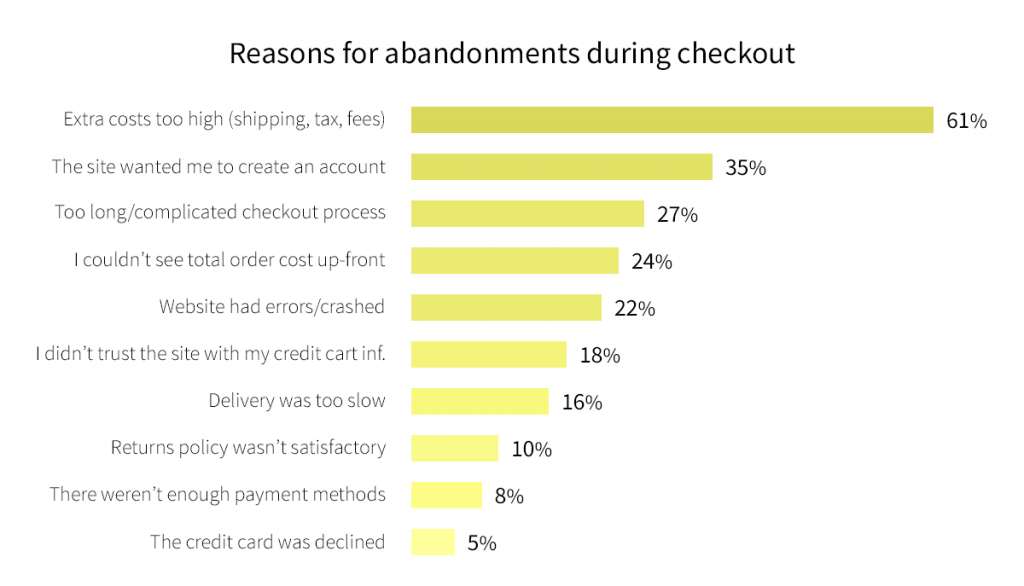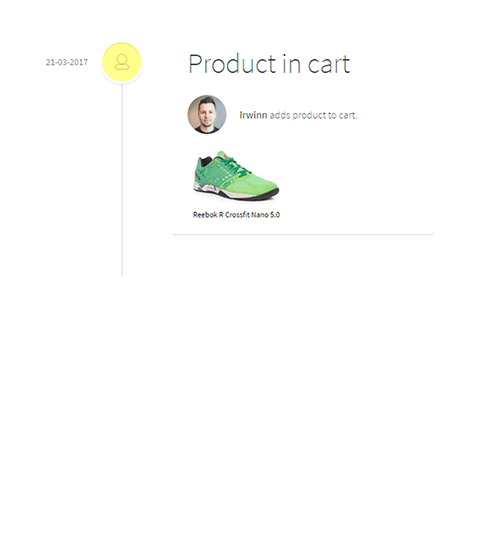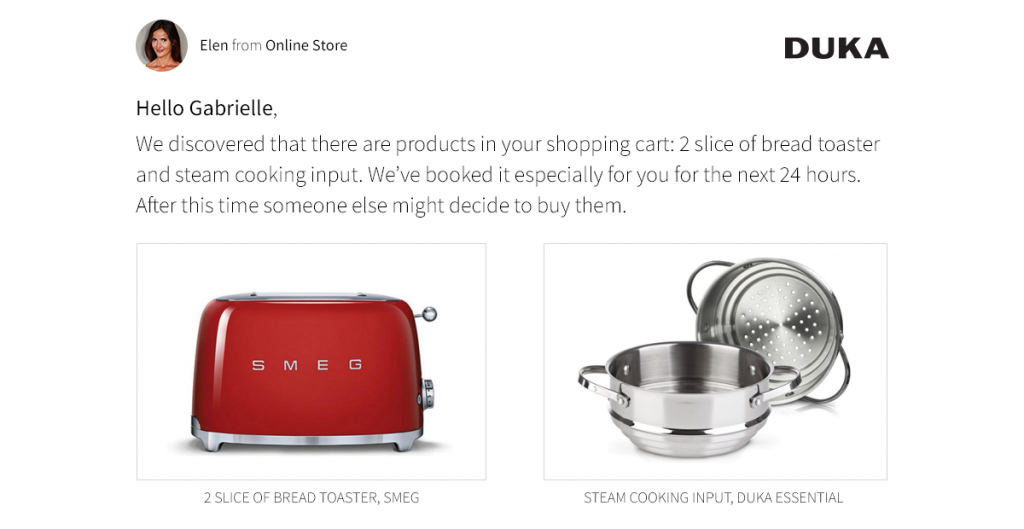A client has abandoned a shopping cart in your online store? Find out how to recover it
Table of contents
- Why are customers abandoning their shopping carts?
- How to solve some of these problems?
- What to do if the client abandons the shopping cart anyway?
- Rescuing abandoned shopping carts step by step
- When should we send the first message encouraging the customer to complete their purchase?
- Should you offer discount codes?
- Is it worth to rescue shopping carts?
- Sign up for
Do you want to increase sales and build even better relationships with your customers?
Shopping carts are abandoned in all online stores. It’s a problem that we cannot completely prevent and which is influenced by a number of factors. You can, however, minimize this phenomenon through an appropriate UX of your store, and with the help of systems such as marketing automation and eCRM you can recover up to […]
Shopping carts are abandoned in all online stores. It’s a problem that we cannot completely prevent and which is influenced by a number of factors. You can, however, minimize this phenomenon through an appropriate UX of your store, and with the help of systems such as marketing automation and eCRM you can recover up to 30% of abandoned shopping carts.
The phenomenon of customers abandoning their shopping carts is very common and we are not able to completely prevent it. Systems such as eCRM and marketing automation provide us with scenarios that are able to recover some of the abandoned shopping carts, but before we get to that stage, it would be worth to consider the reasons why the clients fail to complete their purchases and whether it is possible to eliminate these reasons.
Why are customers abandoning their shopping carts?
It often happens that a customer adds products to the shopping cart with the intent to purchase them, but is later turned off by the excessively high delivery cost. The most common cause of shopping cart abandonment is precisely the excessive cost of delivery. Sometimes the abandonment of a shopping cart is the result of comparing offers from various stores and the ultimate selection of the store with the lowest price.
Other causes of the abandonment of shopping carts include problems with the finalization of the transactions, such as the need to register or an overly complicated process that the customer has to go through in order to complete the transaction. The ability to complete the purchase without the need to create an account in the store is a necessity, but we should also make sure that this option is clearly and visibly communicated on the site.
The most common causes of shopping cart abandonment (according to research carried out by Baymard Institute):
- excessive additional costs, e.g. delivery costs
- the need to create an account in order to finalize the transaction
- an overly complicated payment process
- the lack of visible information concerning the additional costs
- errors in website operation
- lack of trust in the payment form
- excessively long delivery time
- unsatisfying return policy
- insufficient number of payment methods
- rejection of the credit card
Image 1: Causes of shopping cart abandonment (source: Baymard Institute)

How to solve some of these problems?
The main cause of the abandonment of shopping carts are the delivery costs. However, not every store can afford to offer free shipping. In this case, a good option is to offer free delivery from a certain purchase amount and to inform the customer about this at the very beginning of their shopping experience. This approach also has other advantages – the customer will want his order to exceed the given amount, and as a result will purchase more in our store.
The problems that emerge at the stage of the payment can be solved by taking care of the website’s UX. The client must be able to complete the purchase without the need to create an account and this possibility should be clearly and visibly communicated. We should also ensure that the forms which the customer has to fill are as short as possible and that they are clearly described.
What to do if the client abandons the shopping cart anyway?
By following the above recommendations you can minimize the risk of shopping cart abandonment, but, unfortunately, you cannot completely prevent it. So how can we recover an abandoned shopping cart? In such a situation we can utilize eCRM systems that come with ready scenarios for rescuing shopping carts. They are based on email messages sent to the customer, reminding them that they have products left in their cart, and encouraging them to complete the purchase
Rescuing abandoned shopping carts step by step
Rescuing shopping carts is a marketing automation scenario which means that messages are sent automatically after a specific activity of the client, and in this case, after the products are abandoned in the shopping cart. We only have to design the messages, determine their content and when will the clients receive such messages. The customer doesn’t even have to be logged into the store at the time of abandonment of the shopping cart in order to receive the message. The system will recognize them based on the cookie files and will match them with a corresponding email address.
Image 2: Abandoned Carts Recovery scenario

When should we send the first message encouraging the customer to complete their purchase?
How much time should pass from the abandonment of a shopping cart until the dispatch of the first message may depend on the industry and the prices of the products offered in your store. In the case of expensive and unique products the decision to make a purchase takes more time. The customer may add products to the cart and leave the store in order to reconsider the purchase or to look for reviews of the product. Therefore it doesn’t make sense to send them a message just an hour after they abandoned the shopping cart.
The situation is different if you sell cheaper products or operate in an industry where you have a lot of competition and there is a good chance that your client will quickly find similar products at another store. In such a case it absolutely makes sense to send a message after 2-3 hours.
Should you offer discount codes?
A discount coupon can effectively encourage the client to complete their purchase. However, sellers often question whether offering discounts is a good idea. It’s really a very individual issue. You have to decide whether it is more profitable for you to sell a product at a discount or not to sell it at all, with the hope that there will be another customer who will buy the product at the regular price.
In order to successfully recover a shopping cart, you should think about the cause of its abandonment. In many cases, the price is not the reason. Sometimes such decisions are caused by concerns about the ability to return the product. So maybe it would be worth to inform the customer in such a message that they can return the product if they don’t like it?
Image 3: An example of a message encouraging a customer to finish their shopping

You design the scenario of abandoned shopping carts on your own and you decide what messages you send to the clients and when will they receive these messages. You can, therefore, send the first message to the customer 3 hours after the abandonment of the shopping cart, and if this doesn’t work – you can send the second message, with a discount coupon or an offer of free delivery after a few days.
Is it worth to rescue shopping carts?
The abandonment of shopping carts is a problem of all online stores. If you take no action to counter it, you certainly won’t gain anything. By using a shopping cart rescue scenario you will convince at least some of your customers to finalize their purchase. The experience of edrone experts indicates that with our system you can recover up to 30% of abandoned shopping carts. I think that these figures clearly show that it’s worth to rescue shopping carts. Regardless of the size of the store or the industry in which it operates.
Sign up for WEBINAR to learn more about edrone or try our DEMO
edrone
CRM, Marketing Automation and Voice Commerce for online stores. All in one.
Do you want to increase sales and build even better relationships with your customers?